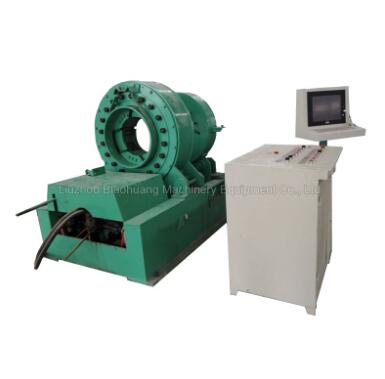What does a bucking unit do?
A bucking unit, also known as a bucking machine or bucking tool, is a device used in the oil and gas industry for the assembly and disassembly of threaded connections on oilfield tubulars, such as drill pipes, casing, and tubing. It plays a crucial role in the process of makeup and breakout of threaded connections during drilling and well completion operations.
Function of a Bucking Unit: The primary function of a bucking unit is to apply controlled torque to tighten or loosen threaded connections on oilfield tubulars. These threaded connections, known as "premium connections," are designed to provide a secure and leak-proof seal in the harsh and high-pressure environment of oil and gas wells.
Key Features and Uses:
Torque Application: The bucking unit is equipped with a torque wrench or hydraulic power tong that applies precise and consistent torque to make up (tighten) or break out (loosen) the threaded connections. This ensures that the connections are properly tightened to the manufacturer's specifications, preventing potential leaks or failures downhole.

Safety and Efficiency: Bucking units improve safety by reducing the risk of injuries associated with manual handling of heavy tubulars and manually turning wrenches. They also enhance efficiency by automating the makeup and breakout process, allowing for faster and more accurate operations.
Versatility: Bucking units are designed to handle a wide range of tubular sizes and premium connections. They can be adjusted to accommodate different thread profiles and connection types commonly used in the oil and gas industry.
Real-time Monitoring: Some modern bucking units are equipped with sensors and monitoring systems that provide real-time data on torque, turns, and other parameters during the makeup and breakout process. This data helps ensure that the connections meet the required specifications and allows for quality control.
Remote Operation: Some bucking units can be operated remotely, which is especially beneficial in hazardous or challenging environments. Remote operation reduces the exposure of personnel to potential risks associated with oilfield operations.
Prevent Damage: The controlled torque application provided by bucking units helps prevent damage to the threaded connections and ensures that the tubulars can be reused multiple times without compromising their integrity.
In summary, a bucking unit is a vital tool in the oil and gas industry for properly assembling and disassembling threaded connections on oilfield tubulars. By providing controlled torque application, bucking units enhance safety, efficiency, and the overall integrity of oil and gas wells, contributing to successful drilling and well completion operations.



